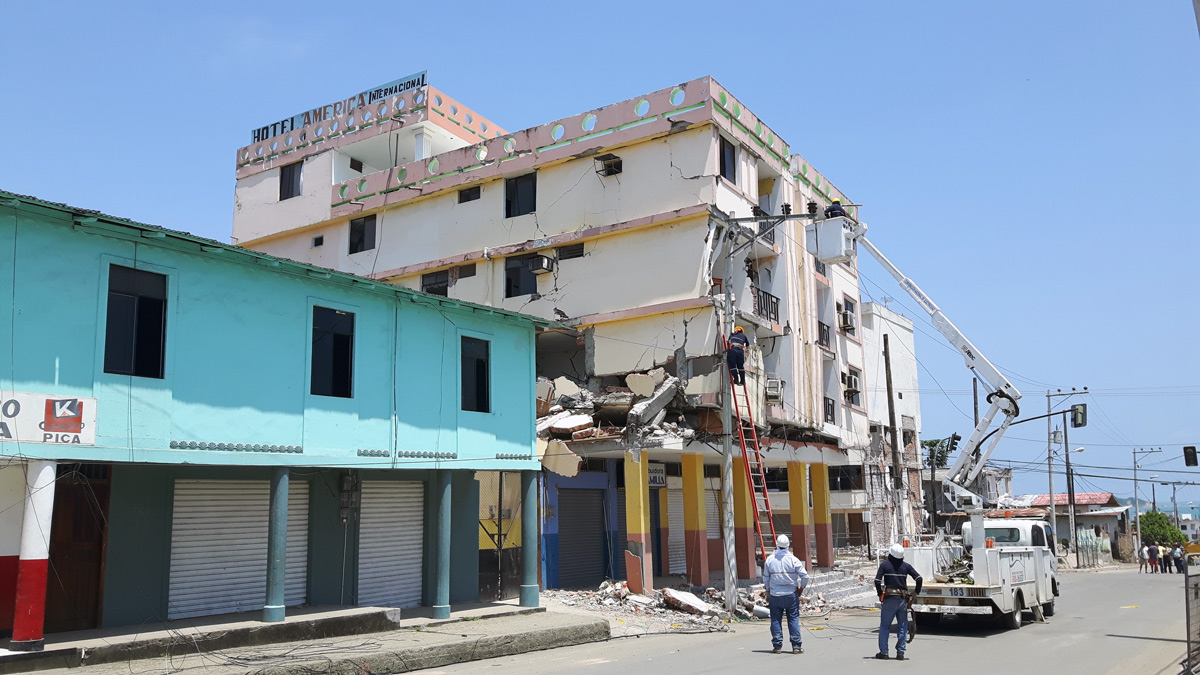The response to Ecuador's 7.8-magnitude earthquake went beyond just physically rebuilding the hardest hit cities

Disasters are never entirely natural; the risks inherent in our environment can be amplified or diminished by any number of factors, from culture to politics and economics.
Similarly, building back effectively after events like hurricanes and earthquakes is never a simple construction exercise. For engineers working in disaster relief, a strong understanding of the local context and an ability to collaborate with a wide range of stakeholders is as important as technical prowess.
For two Arup staff members who traveled to Ecuador in the wake of April’s 7.8-magnitude earthquake, these lessons were abundantly clear. Part of a UK-government-backed team of seismic experts, Anna Pavan from our Madrid office and Francisco Pavia from our Bogotá office spent 10 days assisting the Ecuadorian military’s relief efforts. Most of their work focused on Pedernales, one of the cities hit hardest by the quake.
Image credit: Arup
FULL STORY: Lessons learned in an earthquake's aftermath

Maui's Vacation Rental Debate Turns Ugly
Verbal attacks, misinformation campaigns and fistfights plague a high-stakes debate to convert thousands of vacation rentals into long-term housing.

Planetizen Federal Action Tracker
A weekly monitor of how Trump’s orders and actions are impacting planners and planning in America.

San Francisco Suspends Traffic Calming Amidst Record Deaths
Citing “a challenging fiscal landscape,” the city will cease the program on the heels of 42 traffic deaths, including 24 pedestrians.

Bend, Oregon Zoning Reforms Prioritize Small-Scale Housing
The city altered its zoning code to allow multi-family housing and eliminated parking mandates citywide.

Amtrak Cutting Jobs, Funding to High-Speed Rail
The agency plans to cut 10 percent of its workforce and has confirmed it will not fund new high-speed rail projects.

LA Denies Basic Services to Unhoused Residents
The city has repeatedly failed to respond to requests for trash pickup at encampment sites, and eliminated a program that provided mobile showers and toilets.
Urban Design for Planners 1: Software Tools
This six-course series explores essential urban design concepts using open source software and equips planners with the tools they need to participate fully in the urban design process.
Planning for Universal Design
Learn the tools for implementing Universal Design in planning regulations.
planning NEXT
Appalachian Highlands Housing Partners
Mpact (founded as Rail~Volution)
City of Camden Redevelopment Agency
City of Astoria
City of Portland
City of Laramie



























